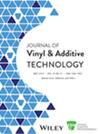Mechanical performance optimization in FFF 3D printing using Taguchi design and machine learning approach with PLA/walnut Shell composites filaments
Abstract
This study explores the optimization of mechanical properties in 3D-printed components made from a Polylactic Acid (PLA) and Walnut Shell Composite using Fused Filament Fabrication (FFF). Employing a machine learning-based approach, the research identifies the optimal regression model for predicting relationships between printing parameters and material properties. A Taguchi L18 design is used to minimize experiment count while accurately determining parameter levels. Testing was conducted on a composite containing 30% walnut shell fibers, with the Ultimate Tensile Strength (UTS) and Elastic Modulus (E) measured as per ASTM D638 standards. Experimental factors included Layer Thickness (LT), Nozzle Temperature (NT), Deposition Angle (DA), and Printing Speed (PS). Using Analysis of Variance (ANOVA) and machine learning techniques, the effects of these parameters on UTS and E were evaluated. Results highlight the deposition angle as the dominant parameter, with machine learning models, especially Random Forest Regression, providing highly accurate predictions. This approach presents a novel, data-driven method for optimizing 3D printing processes with sustainable, composite materials.
Highlights
- Higher UTS and E achieved with optimized PLA/walnut shell composite.
- Deposition angle is the key element of mechanical performance in FFF printing.
- Layer thickness is important to improve Elastic Modulus.
- Statistical and machine learning techniques combined for sustainable printing.
- Improved machine learning process understanding for 3D printed components.





 求助内容:
求助内容: 应助结果提醒方式:
应助结果提醒方式:


